- Free shipping on orders above $50
- Track your order
- +1 813-808-7639
- [email protected]
Coffee begins its journey from the coffee plant, a tropical shrub thriving in regions with the ideal balance of temperature, rainfall, and altitude. These coffee-growing regions are situated along the bean belt—a zone encircling the earth between the Tropics of Cancer and Capricorn. Each region delivers distinct flavors influenced by climate and soil, known as terroir.
Prominent Coffee-Growing Regions Worldwide
The best coffee-growing regions produce beans with signature characteristics, from fruity and floral to bold and chocolatey.
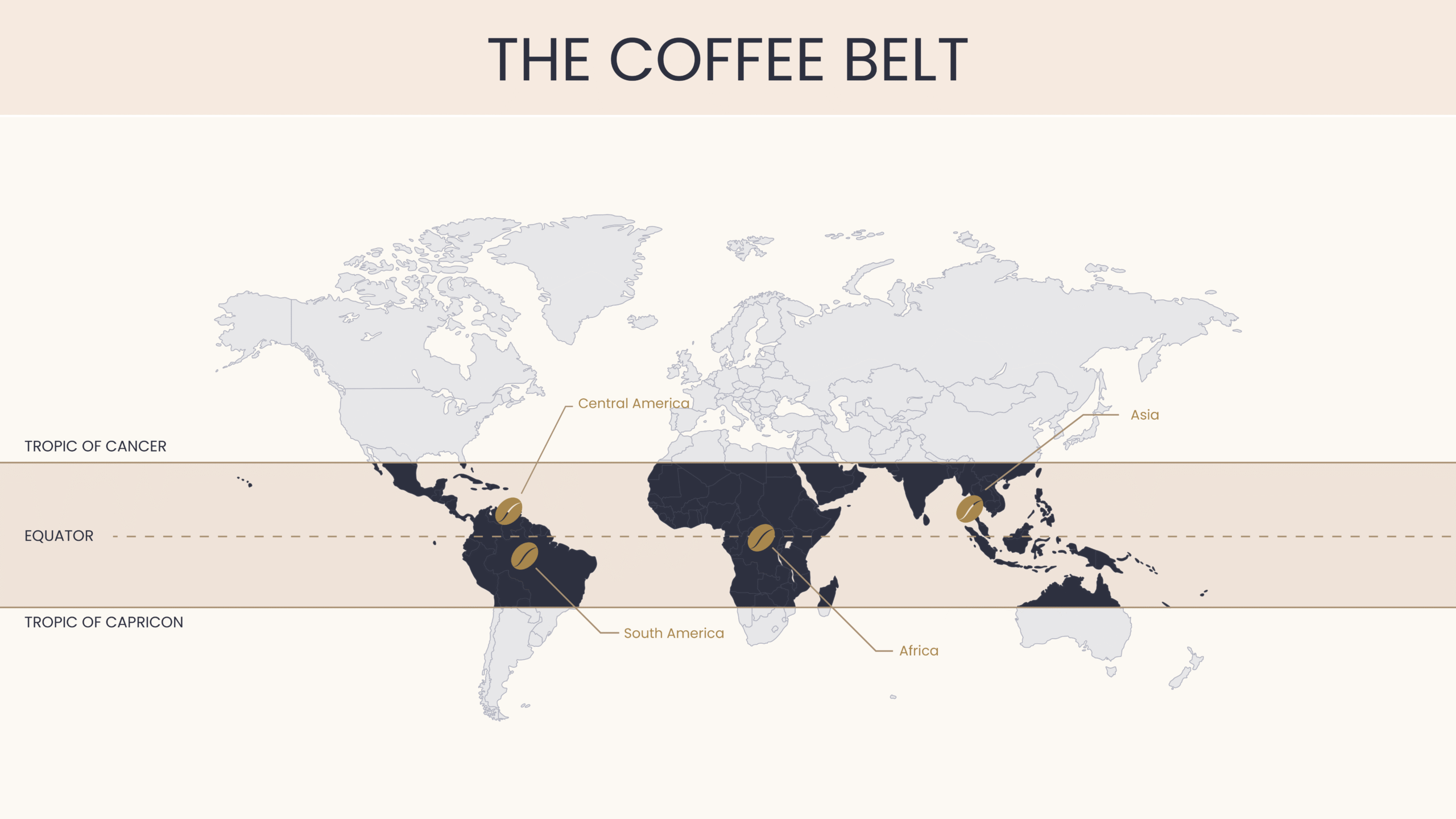
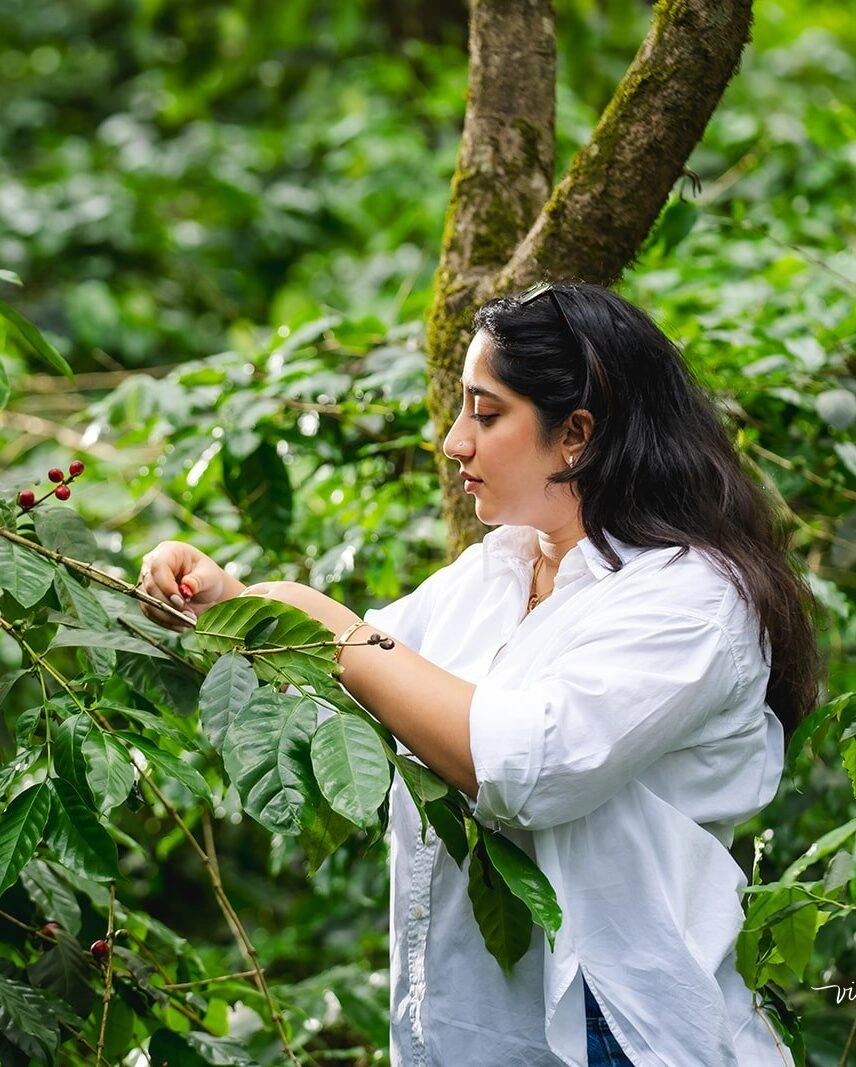
While our business is proudly based in the USA, our coffee story begins in the lush landscapes of South India. India, known for its coffee-growing regions, produces unique, high-quality beans cherished worldwide. The origins of our coffee lie in plantations spread across the fertile hills of Karnataka, part of the global bean belt.
The tropical climate, rich soil, and perfect altitude make South India one of the best coffee-growing regions. These areas yield beans with complex flavor profiles, often described as nutty, spicy, or chocolatey, with a smooth finish. While Indian coffee is lesser known compared to regions like Latin America or Africa, it stands out for its subtlety and balance—perfect for both single-origin brews and blends.
The world enjoys several types of coffee beans, each offering distinct flavors and aromas. Here’s an overview of coffee bean types and their characteristics:
Coffee roasting levels play a crucial role in developing the final flavor of the beans. Here’s a guide to different coffee roast levels:
Professional coffee roasters identify several coffee roasting levels that beans undergo, each delivering unique flavors, aromas, and body. Deciding which coffee roast level suits you depends on personal taste preferences and brewing methods. Let’s walk through the key stages of the coffee roasting process, from light roast coffee to dark roast coffee.
| Roast Level | Color | Flavor Profile / Process | Crack Stage | Best For |
|---|---|---|---|---|
| Light Roast – Cinnamon Roast | Light brown, dry surface | Grainy, toasted flavors with vibrant acidity | The first crack begins with popping sounds | Highlighting origin flavors, great for single-origin coffees |
| Medium-Light Roast – New England & American Roast | Light to medium brown, minimal oil | Balance of acidity and sweetness; New England offers complex acidity, while American Roast brings out nutty flavors | The first crack is still active | For a slightly acidic, flavorful cup |
| Medium Roast – City Roast | Medium brown | Balanced flavors with moderate body and reduced acidity | The first crack just completed | Works well for drip coffee and espresso |
| Medium-Dark Roast – Full City & Vienna Roast | Medium-dark to dark brown, light oil on the surface | Full body with bittersweet, caramel notes; muted acidity | Begins with the second crack | Great for bold brews like espresso or cappuccinos |
| Dark Roast – French & Italian Roast | Dark brown to almost black, shiny, oily surface | Strong, bold, smoky flavors with minimal acidity; French roast offers burnt notes, Italian roast is intensely bitter | Ends with a second crack | Ideal for lattes, mochas, or intense coffee lovers |
From the bright and fruity notes of light roast coffee to the bold, smoky flavors of dark roast coffee, each level delivers a unique experience. Whether you enjoy the complex flavor notes of a light roast or the robust richness of an Italian roast, understanding the coffee roasting levels can help you find your perfect cup.
The coffee roasting process brings out unique aromas by carefully controlling temperature and time, making each roast level ideal for specific brewing methods.
Understanding coffee flavors can elevate your appreciation of each cup. Different factors, like the coffee-growing region and roast level, influence the flavor. Here are some common coffee flavor notes:
Refer to a coffee flavor guide to identify the subtle notes and aromas, enhancing your tasting experience. Keep in mind that caffeine content in coffee can vary depending on the roast level, with lighter roasts retaining slightly more caffeine than darker ones.
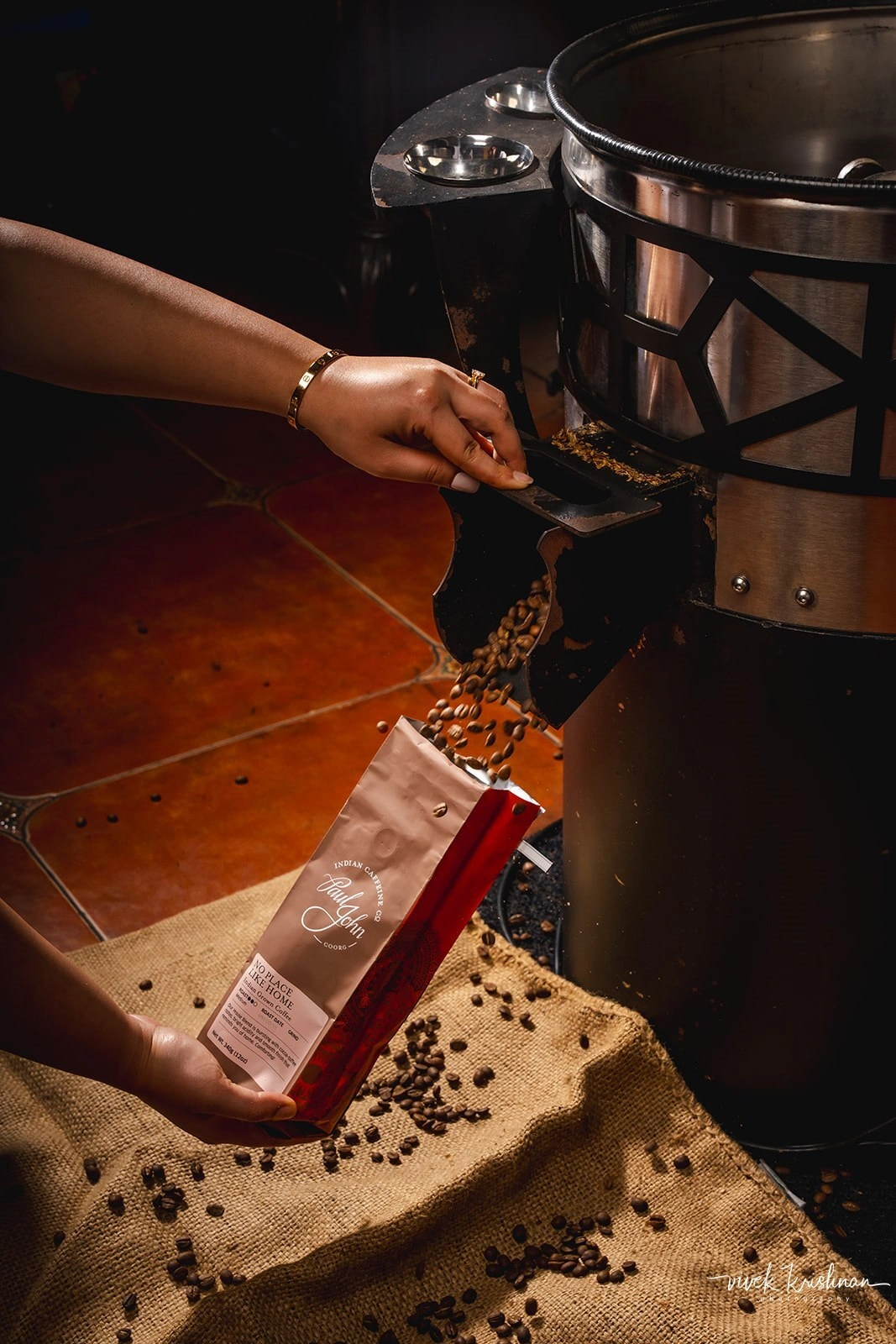
Coffee lovers often seek the perfect brew that meets their caffeine needs. Understanding the caffeine content in various types of coffee can help you choose the ideal beverage for your energy boost. This guide explores the caffeine levels associated with different coffee bean varieties and brewing methods.
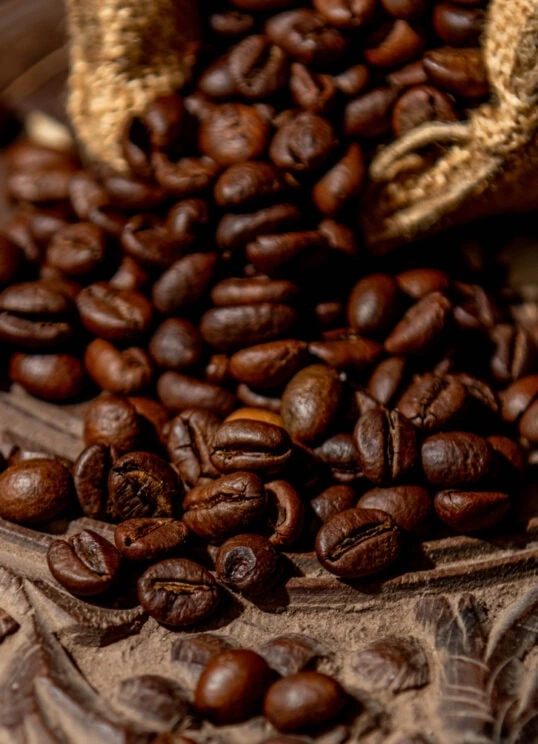
Coffee beans come in several types, with Arabica and Robusta being the most popular. Arabica beans contain about 1.2–1.5% caffeine by weight, equating to a more subtle kick. In contrast, Robusta beans are more potent, containing 2.2–2.7% caffeine, making them ideal for those seeking stronger coffee. Though Robusta has more caffeine, it is generally considered lower in quality compared to Arabica, which offers a smoother, more balanced flavor.
| Bean Variety | Caffeine % |
|---|---|
| Arabica | 1.2% |
| Robusta | 2.2% |
The brewing method significantly impacts the caffeine content in your coffee. The extraction process varies based on the time, temperature, and the quantity of coffee beans used. For instance, espresso has the highest caffeine concentration per ounce due to its method of concentrating a large amount of coffee grounds. However, a standard cup of drip coffee often contains more total caffeine because of its larger serving size.
| Brewing Method | Caffeine range (mg) |
|---|---|
| Brewed Coffee (8oz) | 65-120 mg |
| Instant Coffee (8oz) | 60-85 mg |
| Decaffeinated Coffee, Brewed (8oz) | 2-4 mg |
| Decaffeinated Coffee, Instant (8oz) | 1-4 mg |
| Espresso (1oz) | 30-50 mg |
Preserve the Flavor of Your Coffee
Proper storage of coffee beans is key to maintaining their freshness and flavor. Use these tips to keep your coffee beans in optimal condition:
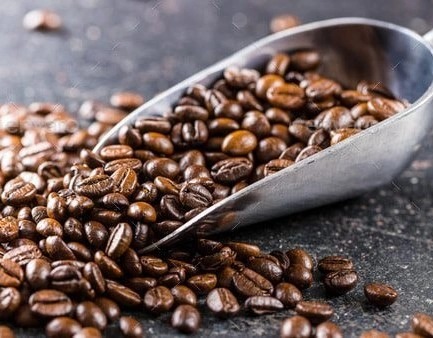
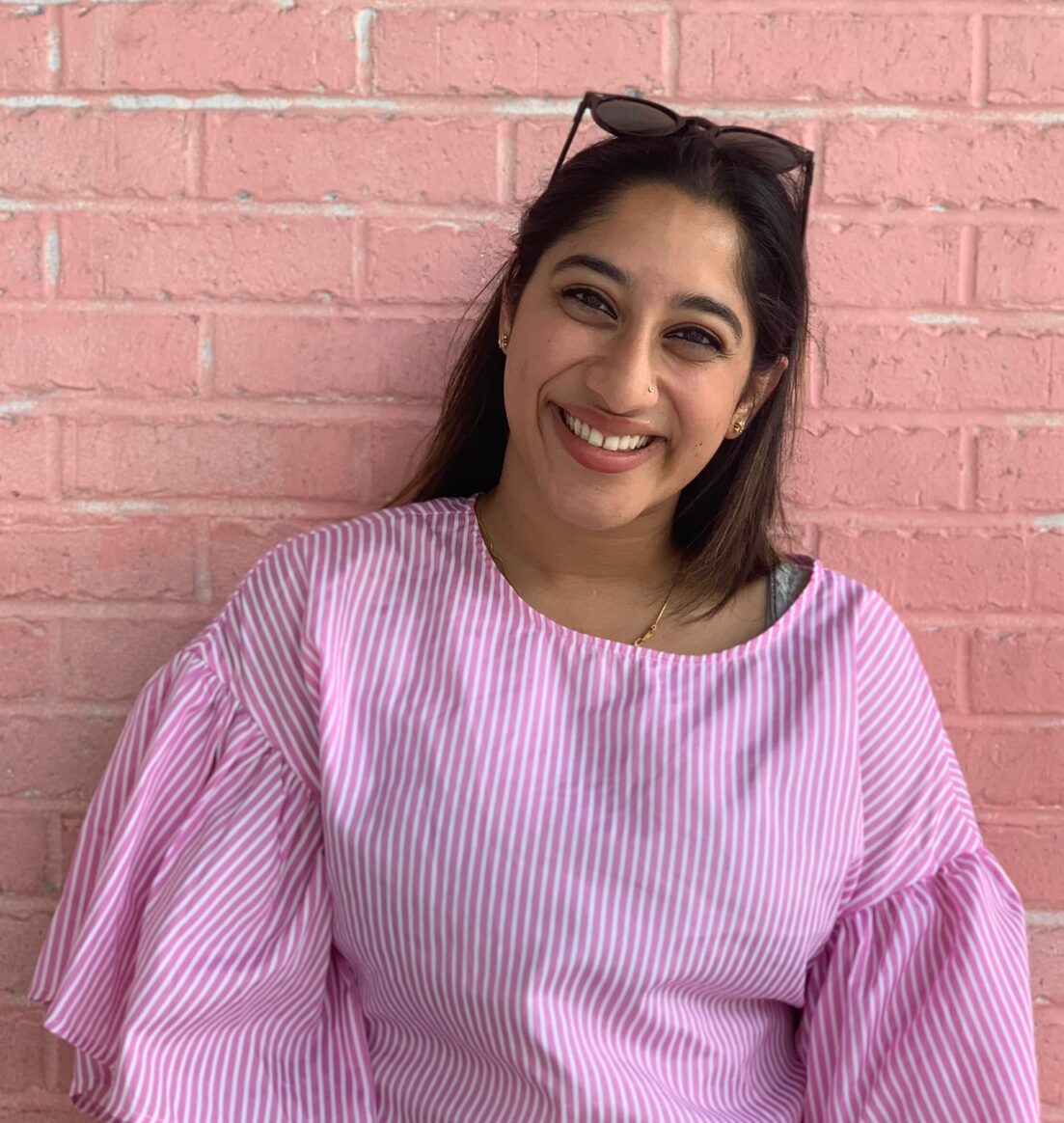
Founder – Paul John Caffeine
Coffee is the elixir of life. A morning ritual for some, a daily pick-me-up for many, and for one person, a chance to connect the West to the East. Born in Bangalore in the South of India, Shonali Paul, daughter of acclaimed liquor baron Paul P John, founder of John Distilleries, discovered her love for coffee at a very young age. During visits to her grandfather’s estate in Coorg, Shonali had a chance to savor a coffee that was bold, yet creamy; uplifting, yet relaxing – a complex set of emotions topped off with a light and airy ‘froth’ from the blended sweetened milk that sat atop the overnight brewed ‘decoction’. This was the very definition of South Indian coffee, a brew so unique that it became her ambition to introduce it to the US where she now resides.
Following in her father’s footsteps, Shonali Paul spurred by her love for coffee, set out to establish the Paul John Caffeine company in 2022. Only the finest, single-origin coffee beans are imported from her home in Karnataka where they are roasted, ground, and packaged in Florida. Unlike the most common coffees imported from South America and Africa, Shonali found the opportunity to bring the slow living of Indian coffee to a place where everything was instant. It was a chance to savor a coffee brewed with love, a slow espresso that made you literally stop to wake up and smell the caffeine. Driven by the desire to share the unique flavors of South Indian coffee, Shonali Paul envisioned a space where every sip invites you to pause, breathe, and immerse yourself in the rich, slow experience of savoring caffeine.
With eight exciting blends showcasing the best Indian Origin coffee, the Paul John Caffeine Company helmed by Shonali Paul aims to reveal the hidden secret of India’s coffee legacy.
Join us on this aromatic journey, where every cup is a celebration of heritage, craftsmanship, and the unspoken magic that happens when Indian coffee beans meet the expertise of our coffee roasters in Tampa, FL. Discover a new dimension of coffee appreciation with Paul John Caffeine – because some stories are best told over a cup of truly exceptional coffee.
The best way to store coffee at home, whether it’s ground coffee or whole coffee beans, is to keep them in opaque, airtight containers away from light, heat, and moisture.
An unopened bag of whole coffee beans can last up to 12 months when stored in a cool, dry, place whereas an opened bag can remain up to a week.
Unroasted, or green, coffee beans can maintain freshness for around 12 months when stored in a cool, dry, dark, and pest-free environment.